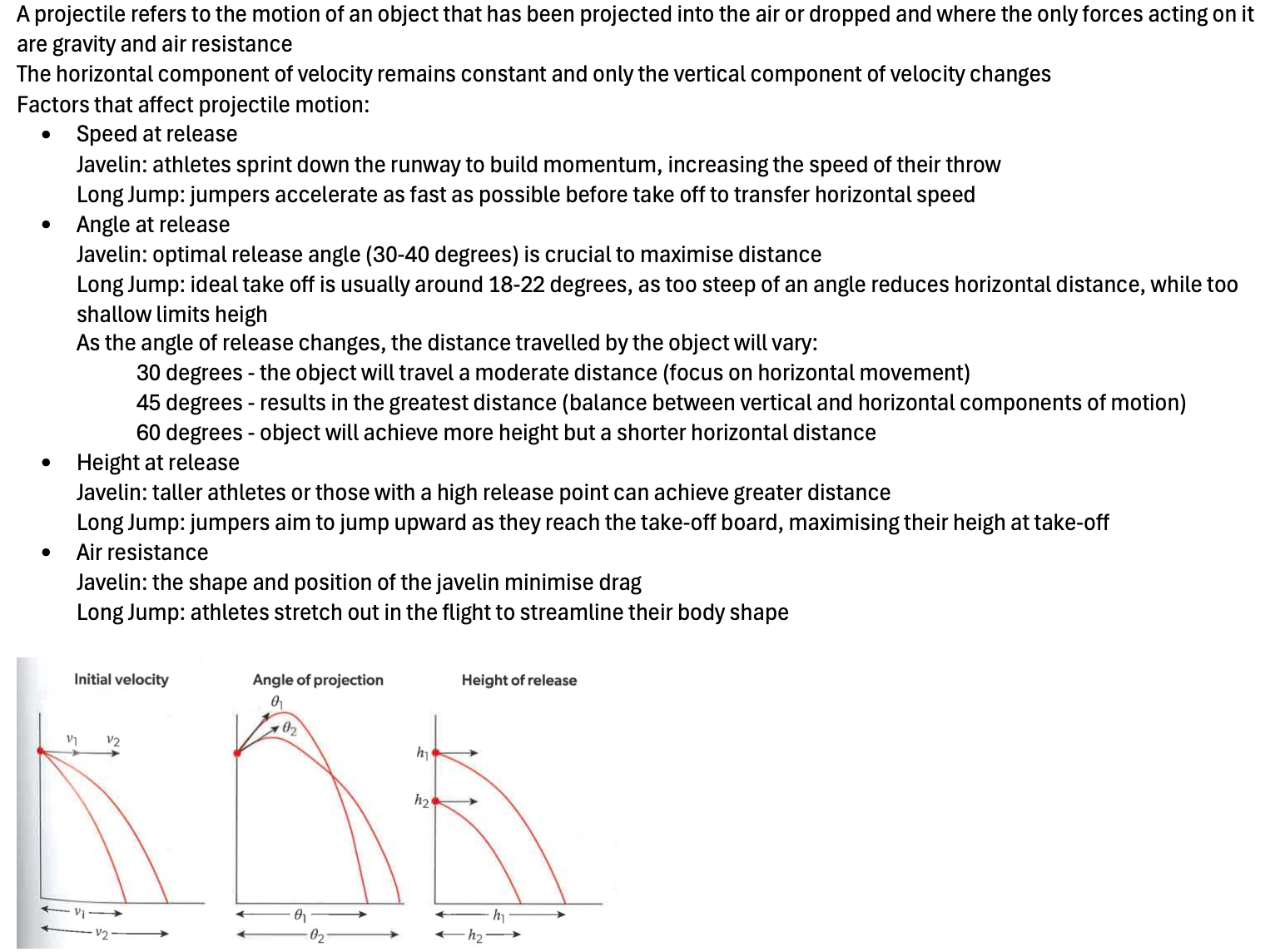Projectile Motion
A projectile refers to the motion of an object that has been projected into the air or dropped and where the only forces acting on it are gravity and air resistance
The horizontal component of velocity remains constant and only the vertical component of velocity changes
Factors that affect projectile motion:
Speed at release
Javelin: athletes sprint down the runway to build momentum, increasing the speed of their throw
Long Jump: jumpers accelerate as fast as possible before take off to transfer horizontal speed
Angle at release
Javelin: optimal release angle (30-40 degrees) is crucial to maximise distance
Long Jump: ideal take off is usually around 18-22 degrees, as too steep of an angle reduces horizontal distance, while too shallow limits heigh
As the angle of release changes, the distance travelled by the object will vary:
30 degrees - the object will travel a moderate distance (focus on horizontal movement)
45 degrees - results in the greatest distance (balance between vertical and horizontal components of motion)
60 degrees - object will achieve more height but a shorter horizontal distance
Height at release
Javelin: taller athletes or those with a high release point can achieve greater distance
Long Jump: jumpers aim to jump upward as they reach the take-off board, maximising their heigh at take-off
Air resistance
Javelin: the shape and position of the javelin minimise drag
Long Jump: athletes stretch out in the flight to streamline their body shape
